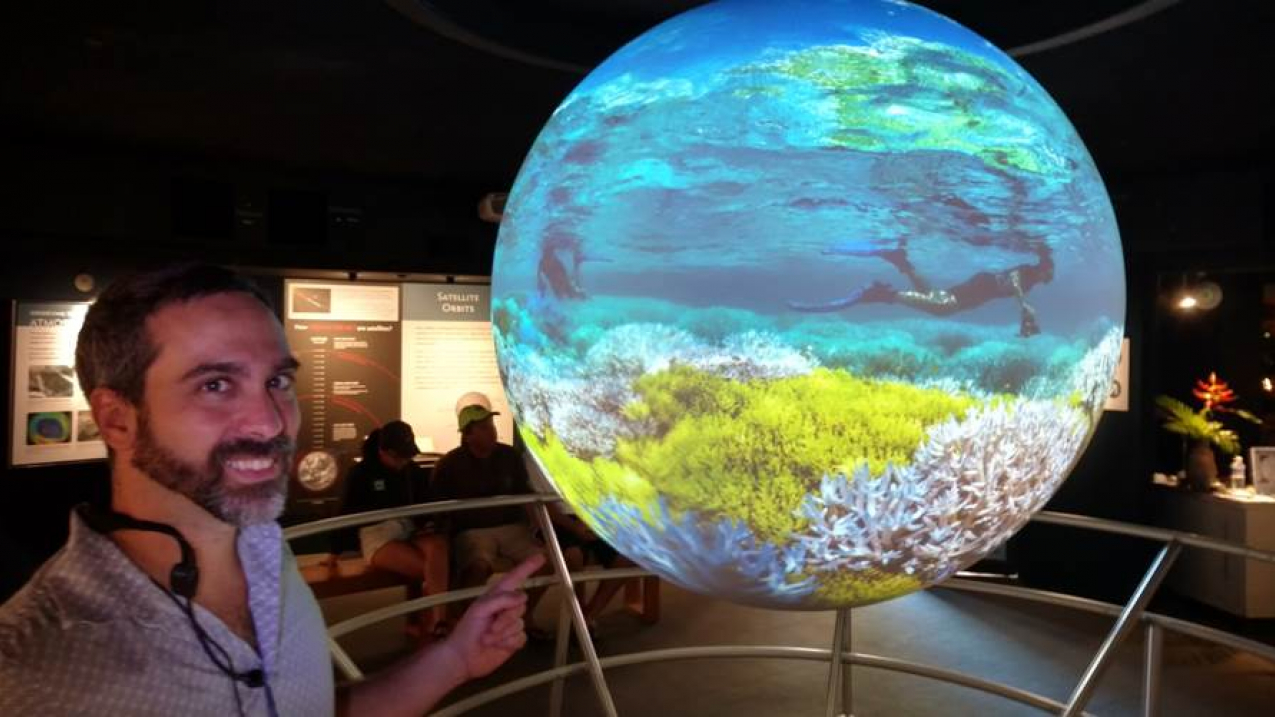NOAA's data visualization technology stole the show at the World Conservation Congress.
The International Union for Conservation of Nature offsite link (IUCN) held their World Conservation Congress offsite link (WCC) for the first time in the United States in Honolulu, Hawaii in September 2016. Held once every four years, the IUCN WCC brings together leaders and decision-makers with the goal of conserving the environment and finding nature-based solutions to these global challenges. The theme for 2016 was a 'planet at the crossroads.'

Paulo Maurin of NOAA's Office for Coastal Management gives a Science On a Sphere presentation about coral bleaching at the Bishop Museum in Hawaii. (Image credit: NOAA Office of Coastal Management)
Approximately 15,000 visitors, residents, and IUCN WCC attendees from over 160 countries learned about NOAA and the work we do in the Pacific. While most conferences are closed to registered participants, the WCC organizers provided free public access to the exhibit hall, which allowed many Hawaii residents to experience the conference. On student day, more than 1,000 K-12 Hawaii students attended the conference, visited the exhibits, and drafted their own motions for conservation.
NOAA’s Science On a Sphere® (SOS) was one of the marquee exhibits at the US Pavilion. The Office for Coastal Management (OCM) coordinated with other NOAA offices to staff 24 presentations on a range of NOAA topics. From spectacular animations showing the global impact of tsunamis to 360-degree underwater footage of rarely seen coral reef ecosystems, visitors marveled at the stunning visual experience afforded by SOS.
Approximately 1,500 people attended the talks in person – and in the past, engagement might have ended there. However, an additional 30,000 people viewed the eight Facebook Livestreams conducted by the Office of National Marine Sanctuaries, the first pilot of Facebook Live within NOAA. Topics included Marine Protected Areas, coral bleaching, marine mammals and turtles, tsunamis, climate change, a virtual dive, one ocean, and estuaries.

Beyond the 10-day conference, the SOS network of over 130 museums and science centers, serving more than 33 million visitors annually, will continue to benefit from the IUCN WCC presentations. The OCM Coral Reef Conservation Program in partnership with NOAA Coral Reef Watch debuted four new real-time SOS data sets, bringing live coral bleaching data for the first time to the SOS network. In addition, five of the Science On a Sphere presentations have been delivered at a large family day at Bishop Museum on February 12, 2017.
Finally, the time spent developing and delivering the presentations has increased both the interest and capacity of NOAA scientists and staff at the Inouye Regional Center, and will no doubt serve as a catalyst to engage future visitors with this powerful visualization tool.
This story was provided by NOAA's Office for Coastal Management, a member of the NOAA Education Council, as part of our ongoing effort to share education accomplishments from across NOAA.



